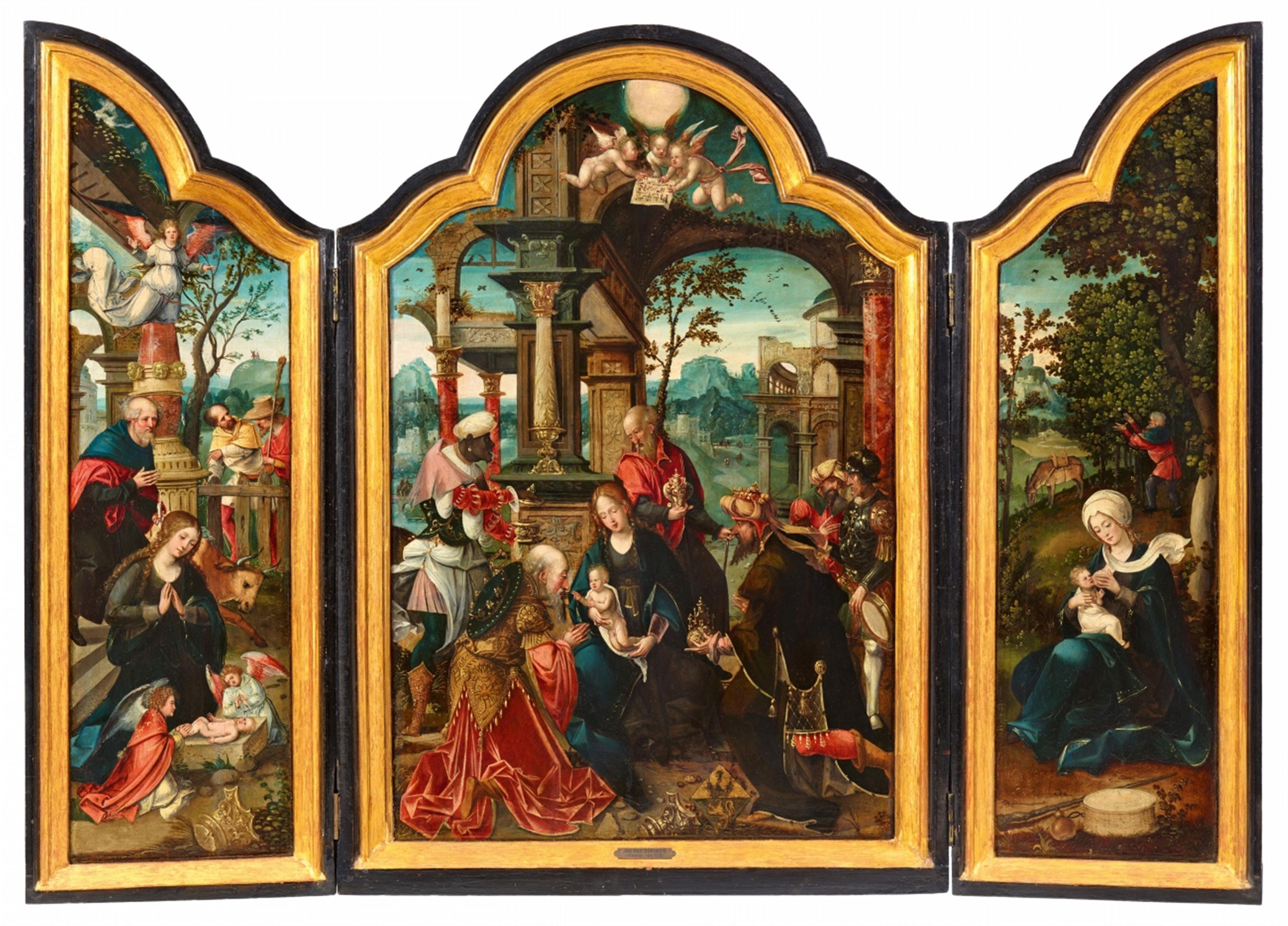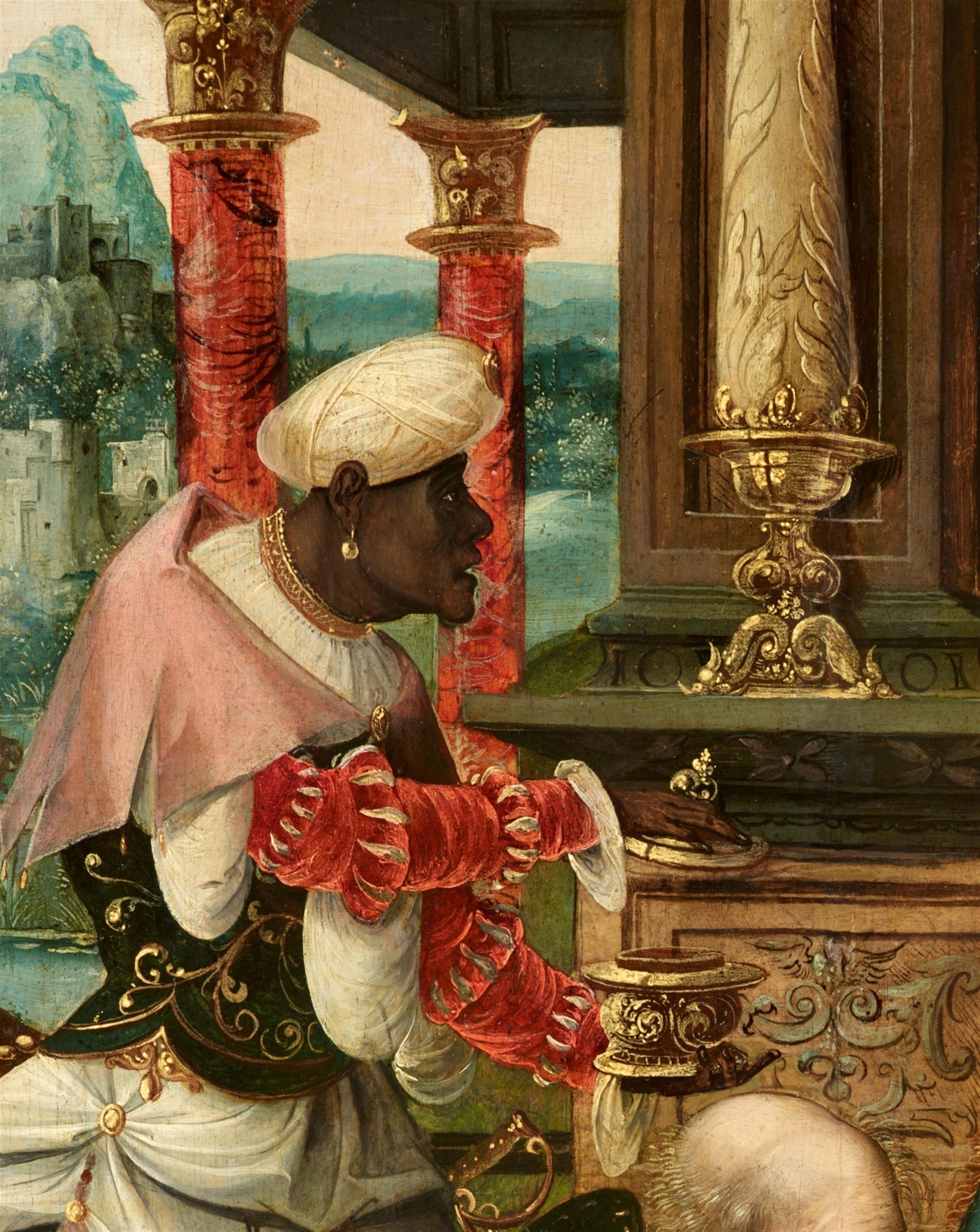Jan van Dornicke, called Master of 1518 and studio
Triptych with the Adoration of the Magi, Adoration of the Shepherds, and the Flight into Egypt
Oil on panel. Central panel 89 x 57 cm, Side panels 89 x 25.5 cm each.
The Master of 1518 was first identified by Max J. Friedländer in 1915 as one of the leading masters of the Antwerp Mannerists, a group who freely blended Italianate and traditional Northern themes. Thereafter in 1966 Georges Marlier proposed to identify him more precisely with Jan Mertens van Dornicke, a painter from Tournai, and this proposal was generally accepted by art historians. Trained in the studio of Jan Gossart in 1505 he entered the Antwerp guild of painters in 1509. As of 1510 he and his workshop produced many altarpieces and devotional paintings for the city's art market. He was the stepfather of Pieter Coeck van Aelst who entered his studio in 1527. The date 1518 corresponds to the date and Antwerp brand marks on the Altarpiece of the Life of the Virgin in the Marienkirche in Lübeck.
At this time the most popular motifs produced by the Antwerp painter's school were altarpieces with scenes from the Infancy and Passion of Christ and the Life of the Virgin. In this context the Adoration of the Magi was one of the most appealing scenes in which to express their taste for exuberant ornamentation, creating a new artistic style and conventions.
The present composition clearly fits in this fashion, and with its curved upper edge the triptych reflects the typical format of early sixteenth century altarpieces. While each panel is devoted to one episode of the Virgin's life, a mountainous landscape extends at the same horizon line in the background, unifying the scenes.
Typical of the Master of 1518's style are the triangular composition of the Adoration scene and the elongated proportions of the figures. The same general iconographic program can be seen in the Altarpiece of the Life of the Virgin attributed to the Master sold on the Paris art market (Drouot sale, 12.10.2014, lot 24). In this altar, King Balthazar kneels in an identical position in prayer before the Infant Christ. The angular face of the Moorish king is typical of the Master's formal vocabulary and recalls the old King both in the Adoration of the Magi in the Museum of Vitoria (See G. Marlier, La Renaissance flamande. Pierre Coeck d'Alost, p. 131, ill. 55), and the present Adoration Triptych.
Certificate
Walther Bernt, Munich 1979.
Provenance
Kunstandel Schweidwimmer, Munich. - Acquired there in 1978. - German private collection.




